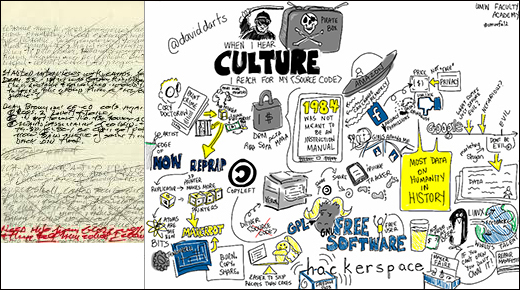Does this sound familiar? The keynote speaker is talking a mile a minute as you scramble to take notes on her every word. Your hand cramps, and then it’s over. Speaker bows to a standing ovation while you sit perturbed, knowing you missed some things. But angst arrives as you look over your notes and realize you can’t read your handwriting!
|
ADVERTISEMENT |
It’s easy to blurt, “That’s the last time I do that!” only to find yourself at another seminar scribbling notes in much the same fashion. End the muda with visual note-taking, aka sketchnotes, coined by designer Mike Rohde.
In this article are tips and further advice from several pundits known in visual note-taking circles. I will express what some may call “the voice of reason,” aka the devil’s advocate.
“Sketchnotes are about listening and drawing, capturing meaningful ideas, not how well you draw,” says Mike Rohde, author of The Sketchnote Handbook: The Illustrated Guide to Visual Note Taking (Peachpit Press, 2013).
…

Comments
Sketchnotes
There wasn't s single sketch in your article.
Really?
This is a common problem in quality improvement, everyone is used to writing essays, not telling stories with charts, graphs and diagrams.
https://www.qimacros.com/lean-six-sigma-blog/the-quality-heros-journey/
https://www.qimacros.com/lean-six-sigma-blog/how-to-create-a-quality-improvement-poster/
Add new comment